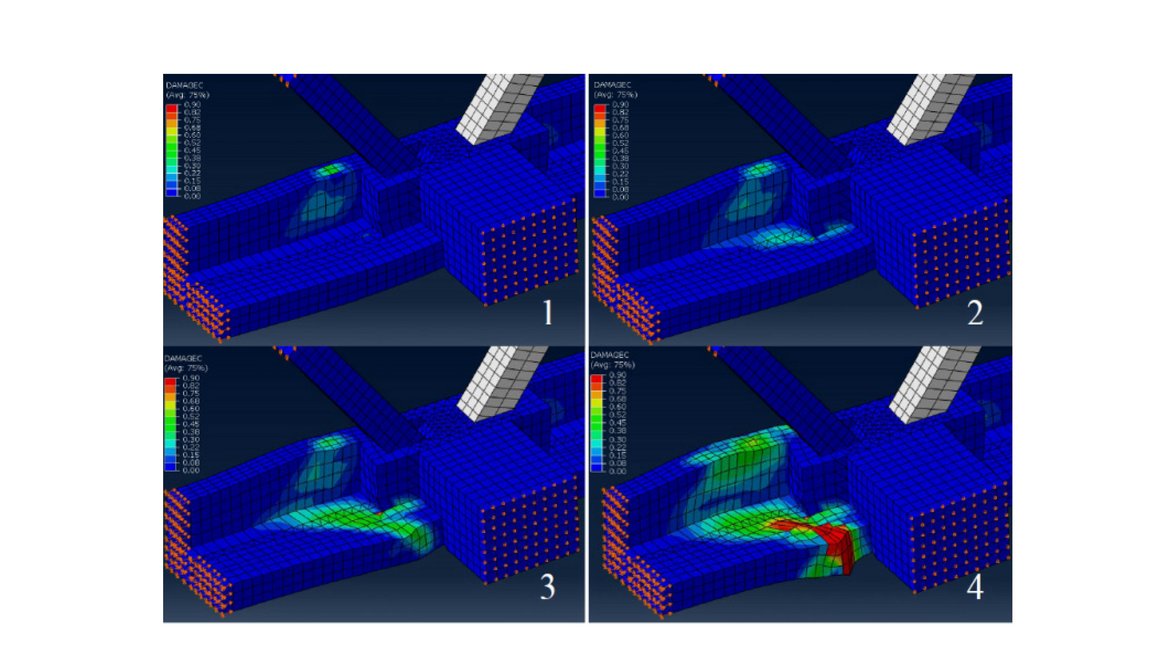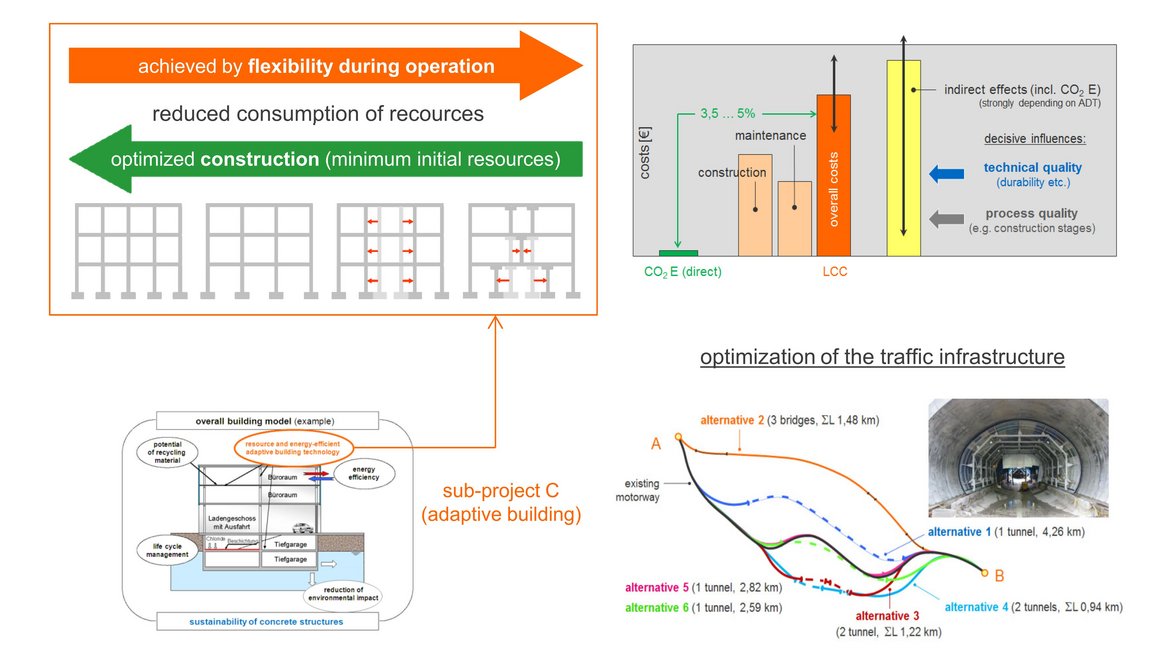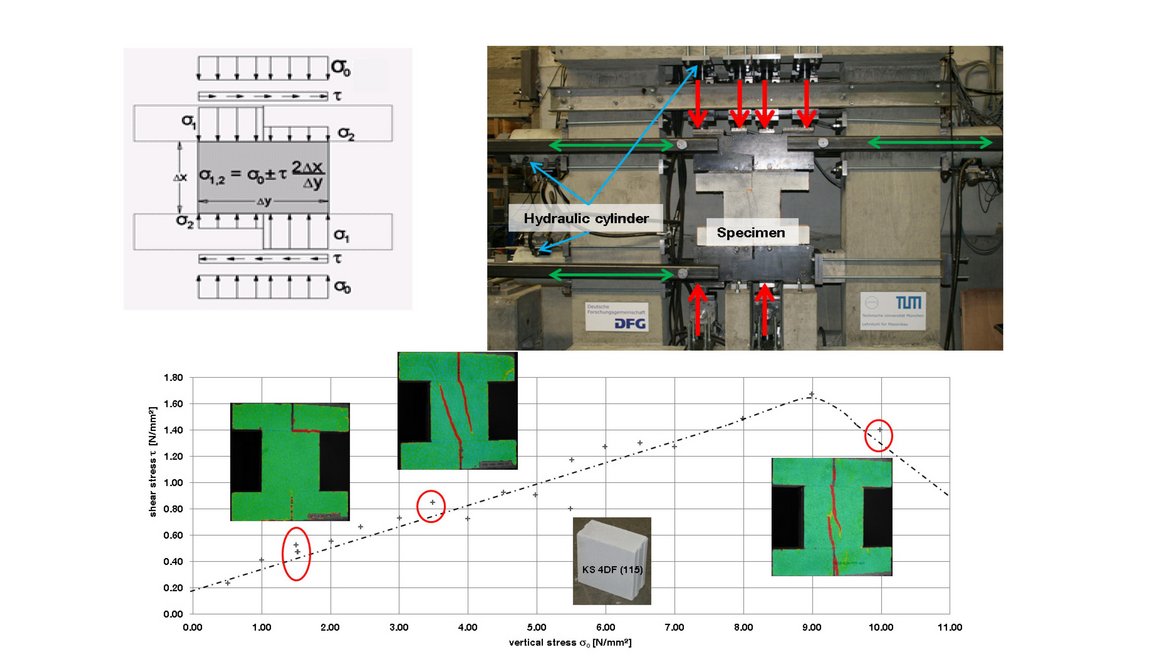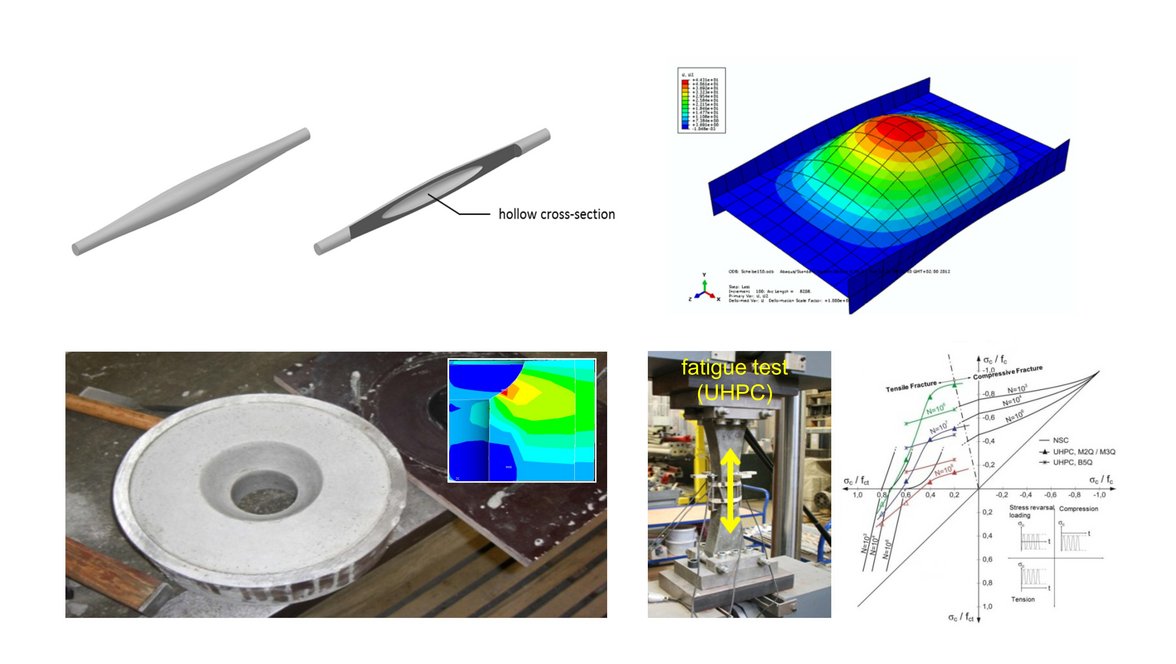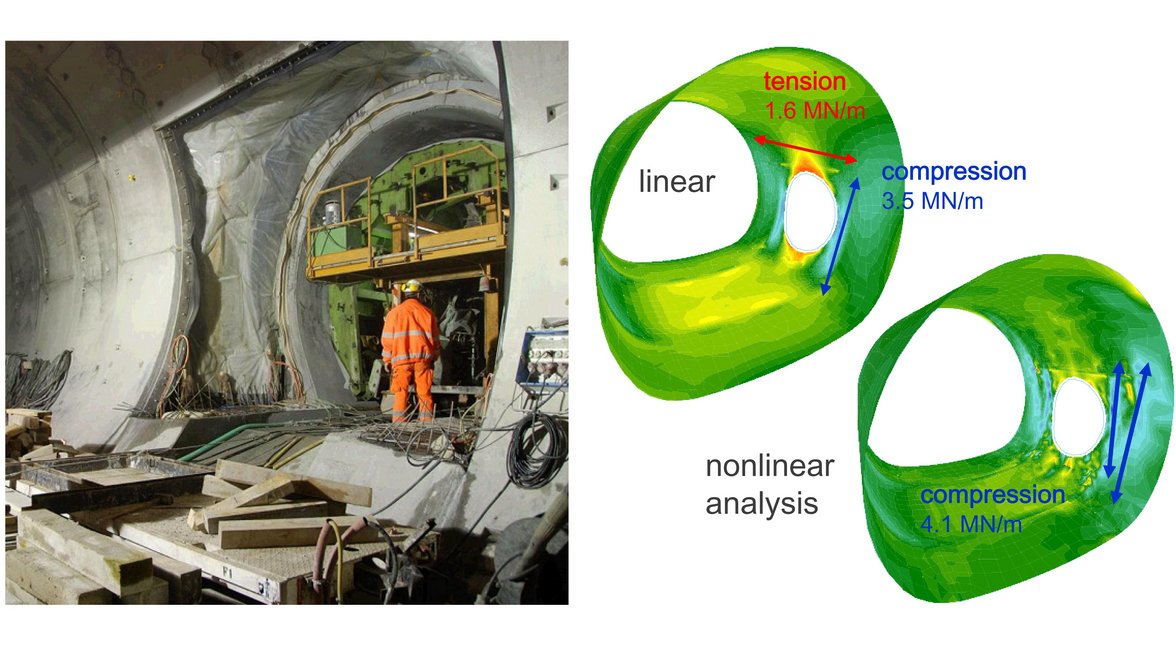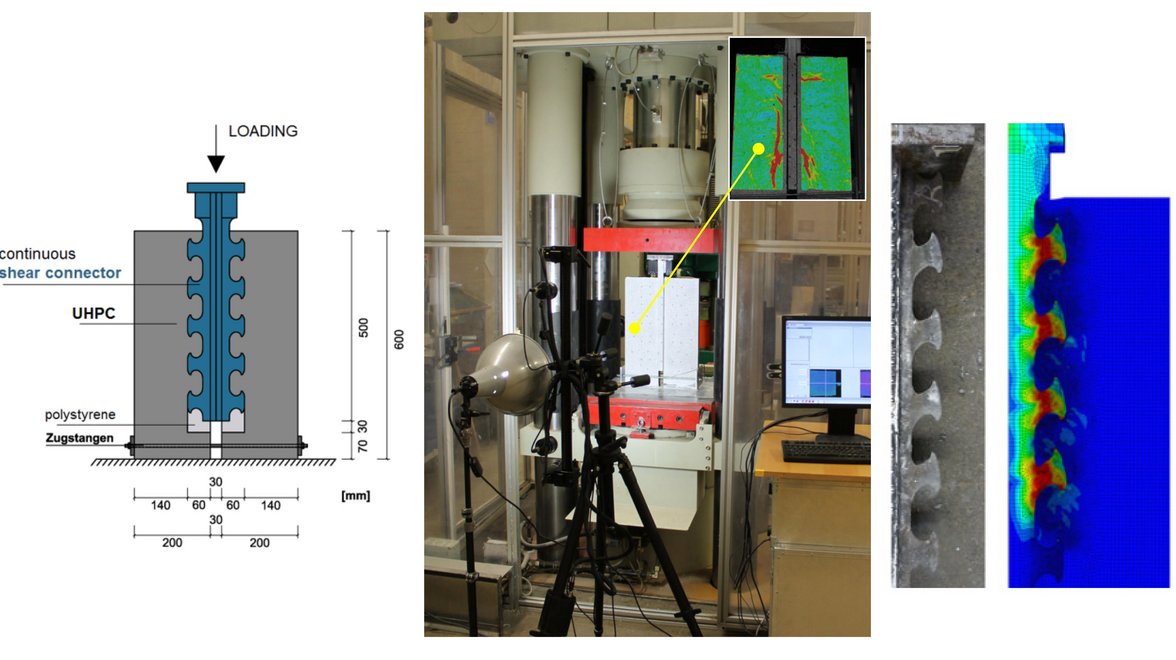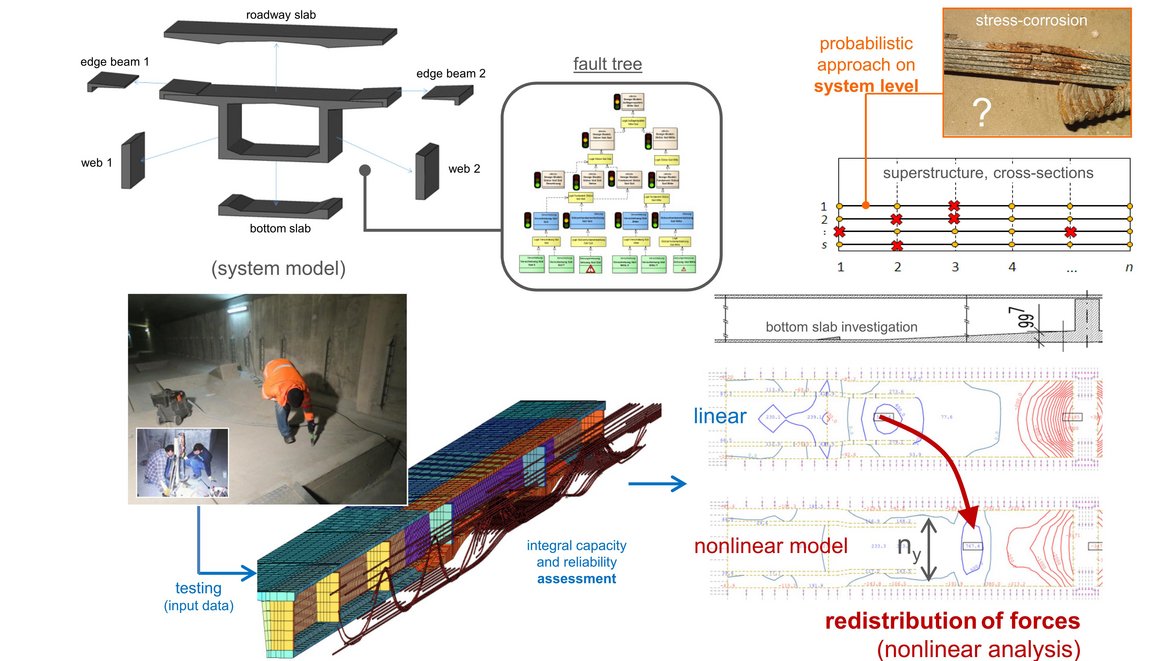The area of Reinforced Concrete and Masonry Structures is centrally relevant in civil engineering because reinforced concrete, prestressed concrete and masonry tructures and structural members are so widespread. On one hand, these types of solid construction are used in the vast majority of structural systems due to technical and/or economic reasons. On the other hand, a significant connection is formed in this area between specialized, fundamental theoretically oriented disciplines (e.g. mechanics, structural analysis, engineering computation, reliability theory, material science) and the practical application in construction.
Important focus areas are the development of suitable structural concepts, material-appropriate modeling and structural application, optimal choice and combination of (traditional and/or new, innovative) materials, and the safe and economic design taking into account special requirements and effects (e.g. dynamic or extraordinary loads as well as fatigue demands).
All of the mentioned aspects are crucial for short and long-term structural stability, as well as the serviceability and durability- and thereby for the integrity and sustainability of the structural members. This applies for new constructions as well as for existing constructions, whose evaluation, restoration and strengthening continues to gain increasing relevance. The orientation of the Chair in research and teaching reflects clearly the position of concrete and masonry structures in the construction industry.
Therefore, significant emphasis is placed on the structural use of traditional and new innovative materials, such as glass- and carbon fibre reinforced polymer (GFRP, CFRP) or textile reinforcements, and high-performance concretes (e.g. UHPC, high-strength normal- and lightweight concretes, steel fiber concretes and shotcretes) and on the analysis of structural systems and the construction of critical D-zones as well as at the optimization of prestressing systems. Further research areas include the application of probabilistic methods, the integral life cycle analysis, the evaluation and strengthening of existing structures, and the development of innovative strategies for the safe construction of structures to resist extraordinary load effects such as fire, earthquakes or explosions. The research themes involve the study of all types of structures including buildings, bridges and tunnels.
Additional impulses result from a close cooperation with other renowned research institutions and international visiting professors. In addition to the great breadth of theoretical, experimental and interdisciplinary research, the Chair distinguishes itself through fruitful cooperation with engineering practice both in the form of successful and fast knowledge transfer of new scientific findings and through the direct integration of relevant practical construction problems in the research. This is illustrated, for example, by pilot projects, by the development of innovative technical solutions (including scientific support for attaining general technical approvals (DIBt) or individual approvals), by the formulation/updating of technical regulations and also through research and development cooperations with important national and international stakeholders from the construction industry. All areas of the Chair benefit from the close interconnection of the experimental research and testing facilities of the TUM (LKI/MPA), the flexible needs-based use of resources and the many years of broad experience of the laboratory staff. The connection with the construction industry is also illustrated by the number of supporting members of the Development Association for Concrete and Masonry Structures of the TU Munich (Förderverein Massivbau der TU München e.V.).
Research areas
- Innovation in the field of bridges construction, prestressing methods and stay cables
- Realistic modeling and design of tunnel linings
- Implementation of new innovative materials in structural engineering
- Research in the field of masonry construction
- Joints, connections and strengthening in concrete structures
- Integrated approaches, sustainable and intelligent constructions
